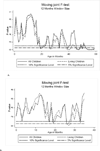Child Gender and Parental Investments In India: Are Boys And Girls Treated Differently?
- PMID: 24575163
- PMCID: PMC3933178
- DOI: 10.1257/app.6.1.157
Child Gender and Parental Investments In India: Are Boys And Girls Treated Differently?
Abstract
Previous research has not always found that boys and girls are treated differently in rural India. However estimates of the effect of gender on parental investments could be biased if girls end up in larger families due to son-biased stopping rules. Using a novel identification strategy that exploits that gender at conception is random, we document that boys receive more childcare time than girls, they are breastfed longer and they get more vitamin supplementation. Compared to other developing countries, boys have an advantage in height and weight relative to girls. Neither greater needs nor anticipated family size explain the results.
Figures







References
-
- Almond Douglas, Currie Janet. “Human Capital Development Before Age Five.”. In: Ashenfelter O, Card D, editors. In the Handbook of Labor Economics. Volume 4b ed. Vol. 15. Amsterdam: Elsevier Science B.V; 2010. pp. 1215–1486.
-
- Anderson Siwan, Ray Debraj. “Missing Women: Age and Disease”. Review of Economic Studies. 2010;77(4):1262–1300.
-
- Arnold Fred, Kim Minja, Roy TK. “Son Preference, The Family-Building Process and Child Mortality in India”. Population Studies. 1998;52:301–315.
Grants and funding
LinkOut - more resources
Full Text Sources
Other Literature Sources
